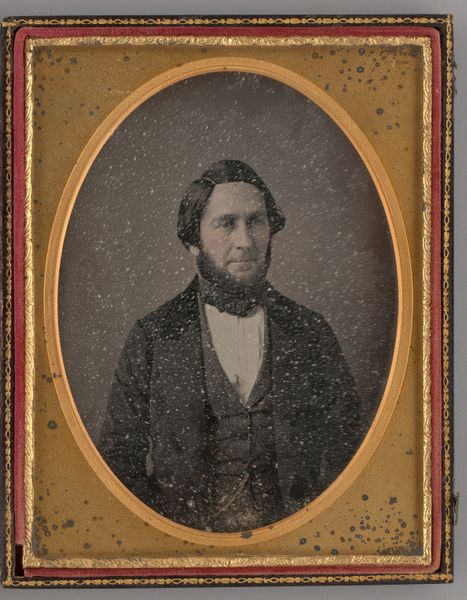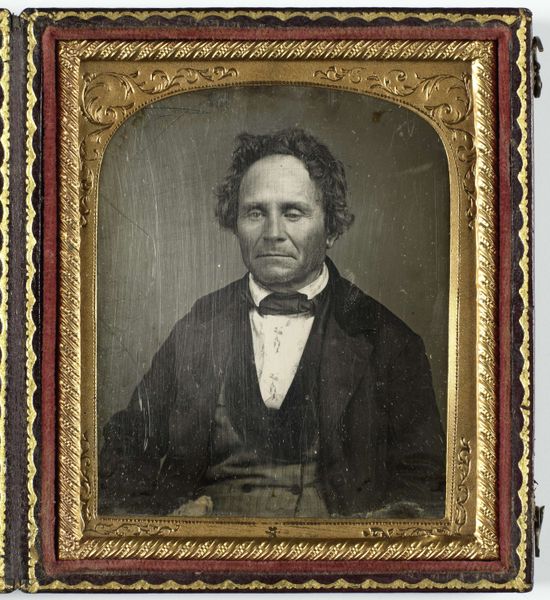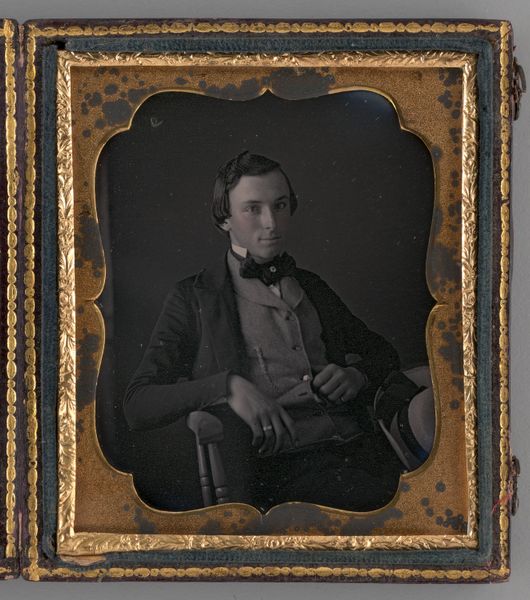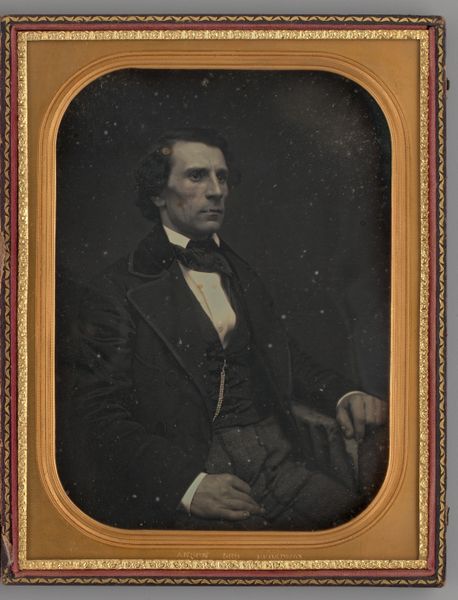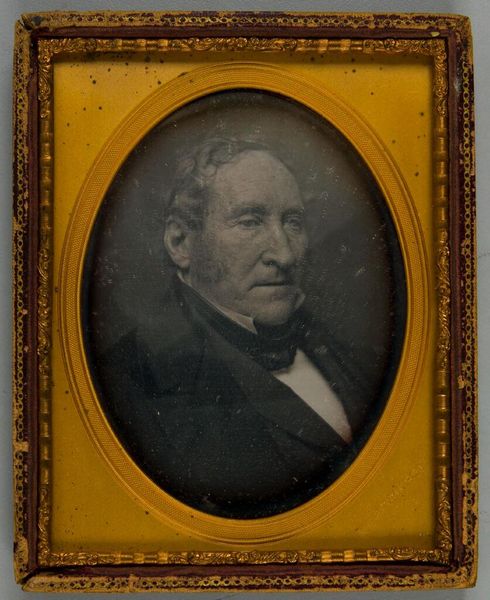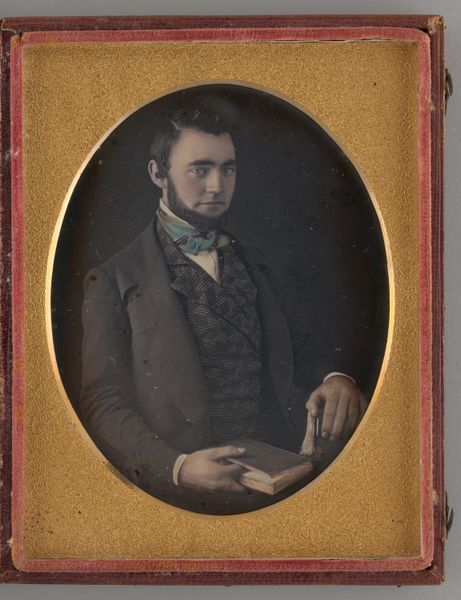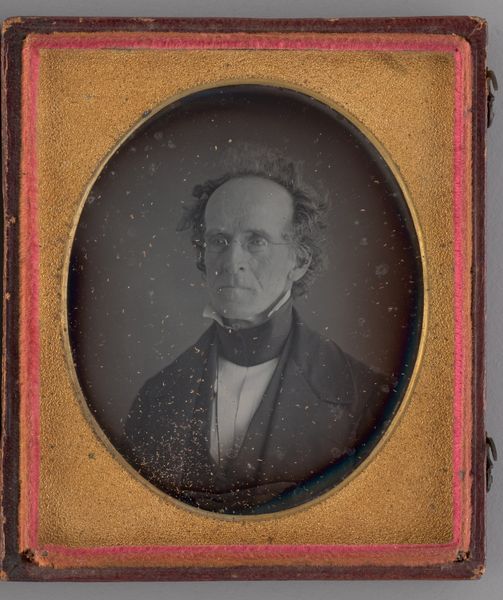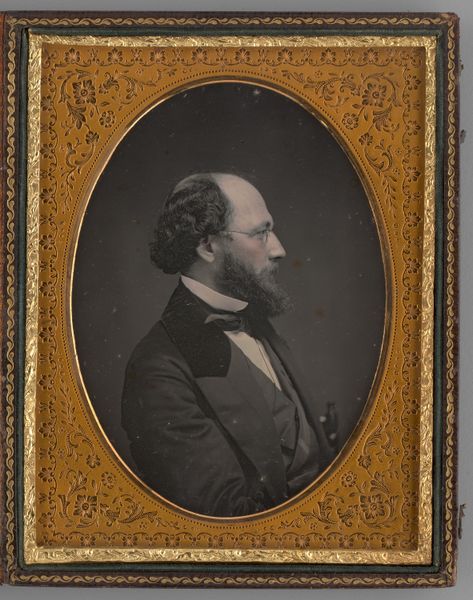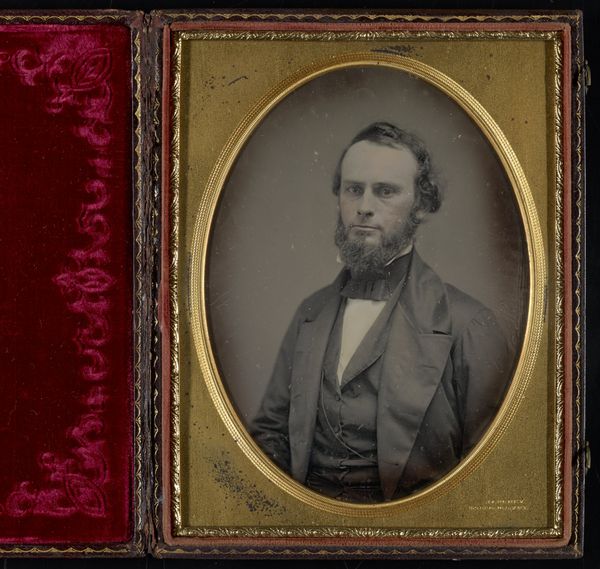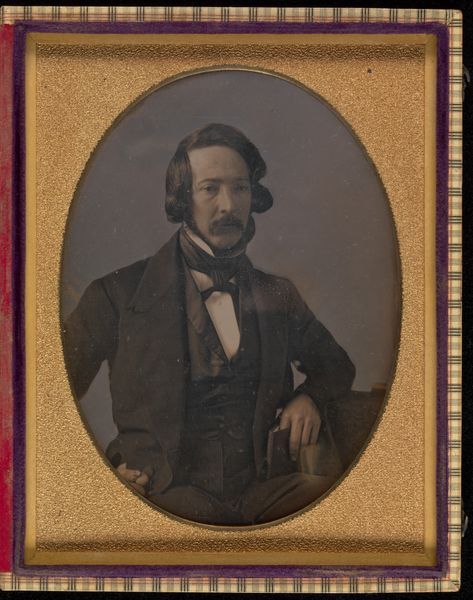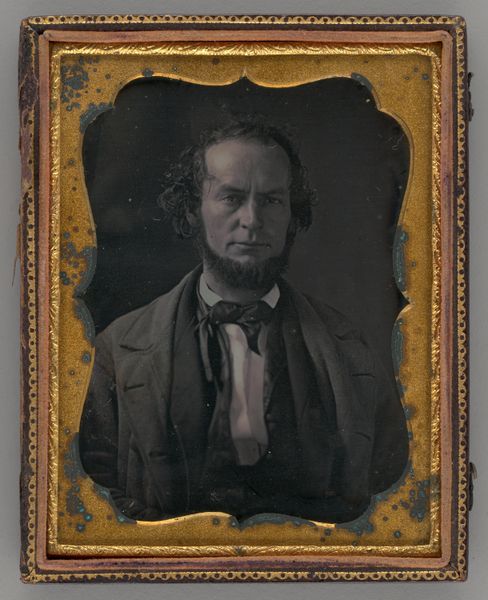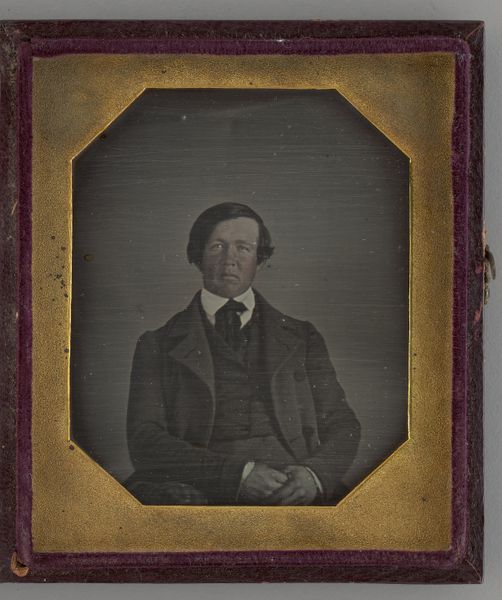
Dimensions: 10.8 × 8.2 cm (4 1/4 × 3 1/4 in., plate); 11.9 × 18.6 × 1.2 cm (open case); 11.9 × 9.3 × 1.7 cm (case)
Copyright: Public Domain
Editor: This is an untitled portrait of a man from 1854, a daguerreotype by John Adams Whipple. The small size and the subject's serious expression give it an intimate and somewhat melancholic feel. What do you see in this piece? Curator: I see the emergence of a new kind of cultural artifact. Photography was still quite novel, yet it instantly became a potent carrier of cultural memory. Consider this man's clothing, the rigid formality, carefully constructed yet already subtly conveying a burgeoning middle class in America. The gaze, while serious, lacks the theatrical posing of painted portraits. It suggests a new emphasis on realism and a psychological accessibility we hadn’t seen before. What sort of person do you think he was? Editor: He seems very self-possessed and confident. Maybe even a little stern, hiding his emotion behind the dark beard and coat. I almost get the feeling of someone suppressing a creative spirit. Curator: Yes, precisely! Notice the slight asymmetry in his features, the almost imperceptible tension around his eyes. Whipple has captured not just a likeness but a fragment of an inner world. That subtle tension between the emerging ideals of objective representation and the indelible mark of the individual… that's where the power resides, I think. Photography quickly became about something more than documentation; it became a stage for projecting hopes, anxieties, and self-awareness in an increasingly democratized visual culture. It offered something painted portraiture could not. Editor: That makes me think about how much we communicate with images, even today. The way we carefully construct an image, what it says about what we want to project out to the world, hasn’t changed all that much. It makes me look at selfies differently. Curator: Exactly! And in that continuity, we find not just an echo of the past, but a clue to our ongoing relationship with visual symbols and the stories they tell.
Comments
No comments
Be the first to comment and join the conversation on the ultimate creative platform.
